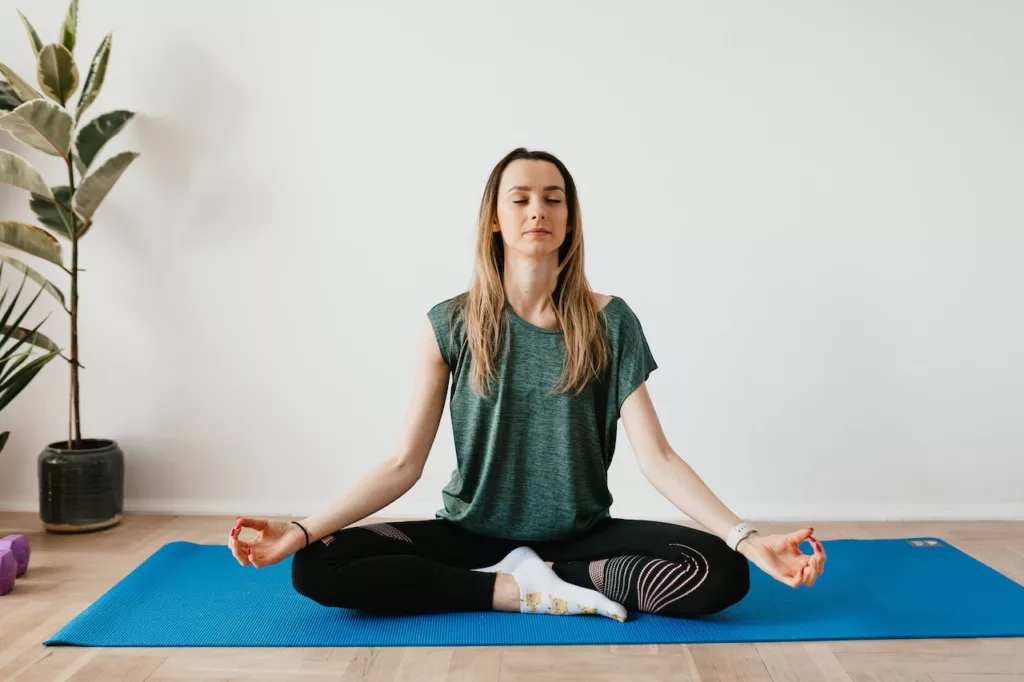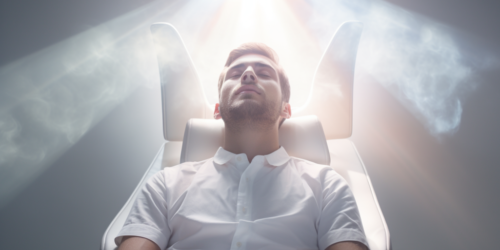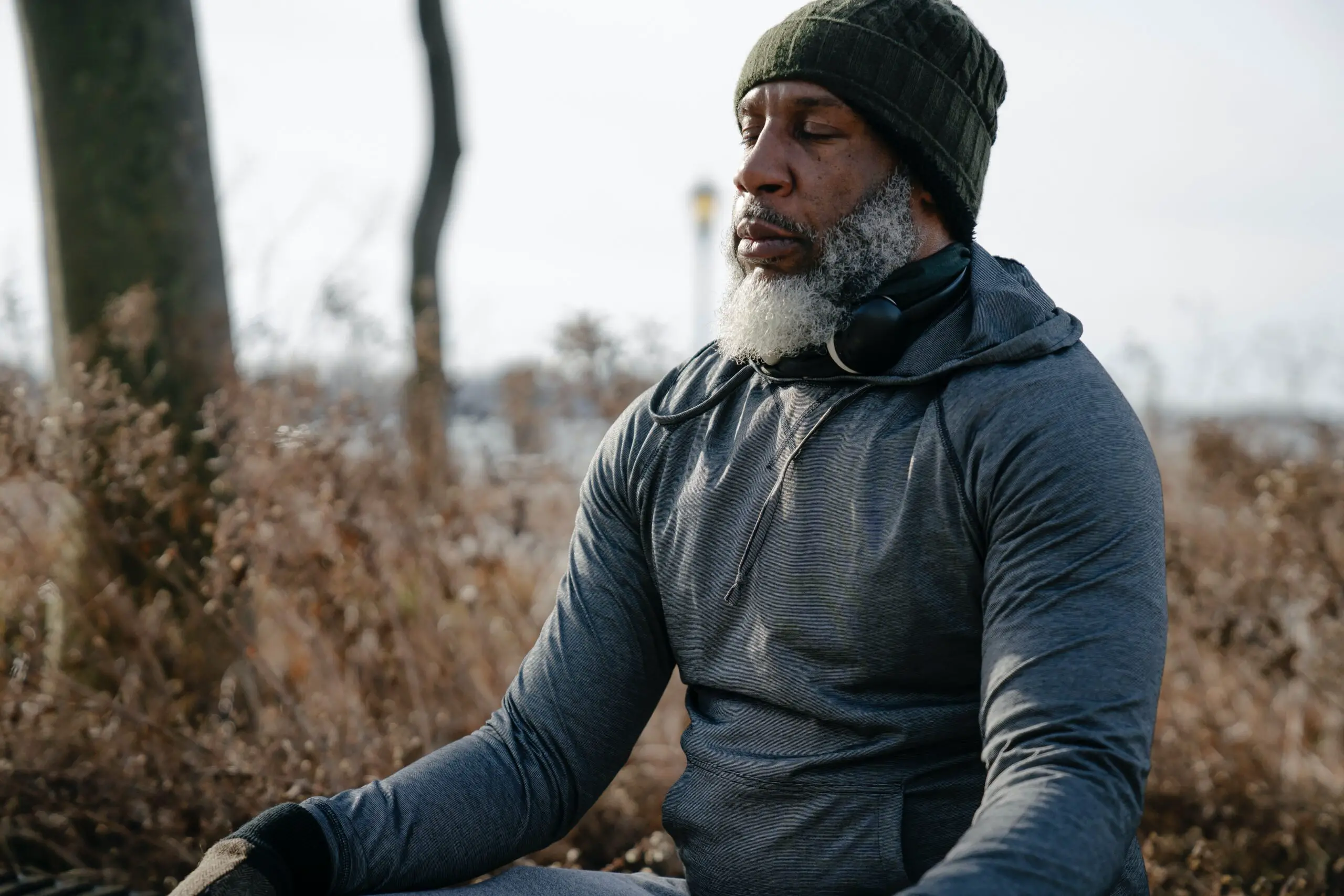Body Scan Mindfulness: A Guide to Reconnecting with Your Body

Weaving together the threads of physical and mental well-being, body scan mindfulness offers us an opportunity to reconnect with our bodies in a meaningful way. Through this practice, we can learn to pause and truly appreciate the complexity of our physical form – its beauty, strength, and fragility – as we journey through life.
In this guide, we will explore:
- What body scan mindfulness is
- Its benefits
- How to prepare for and perform a session
- How it can be combined with other practices
- Tips for keeping up your practice over time
- Common challenges associated with it.
Key Takeaways
- Body Scan Mindfulness is a practice of reconnecting with the body’s sensations.
- It helps recognize patterns in physical sensations and emotions.
- Body Scan Mindfulness cultivates gentleness and non-judgmental awareness.
- It supports balance in life by attending to the body’s needs and promotes appreciation for the complexity of the physical form.
What Is Body Scan Mindfulness
We all have busy lives, and often times it can be easy to forget about the needs of our body. Body scan mindfulness is a great way to reconnect with your body and become more aware of its sensations. It encourages us to take breaks, slow down, and start listening to what our bodies are telling us.
By making time for this practice, we can learn how to better recognize patterns in physical sensations and emotions that may arise throughout the day. Mindfulness helps us cultivate gentleness towards ourselves as we pause to listen without judgment or expectations.
Practicing body scan mindfulness is an important part of finding balance in life so that we’re able to pay attention not only to our thoughts but also our body’s needs.
Benefits of Body Scan Mindfulness
We have all experienced the effects of stress and anxiety in our lives, but body scan mindfulness is a powerful technique that can help us to reduce these feelings and enjoy greater relaxation.
Through regular practice, body scan mindfulness can increase our awareness of our physical sensations and emotional states, allowing us to become more present with ourselves in the moment.
As we become more mindful of how we are feeling, we are able to take better care of ourselves and respond to stress with greater ease and understanding.
Relaxation Effects
You’ll notice the relaxation effects of body scan mindfulness almost immediately. As you focus your awareness on each of the parts of your body in turn, you may find that tension and stress start to subside. This process of self-regulation is beneficial for both mental and physical health.
You can learn to become aware of how your body responds when feeling stressed or anxious, and use this understanding to reduce those feelings through mindful breathing exercises and other techniques. With regular practice, you will be able to step back from stressful situations and respond more effectively. These relaxation effects are not only immediate but also long lasting as they build up over time, leading to a greater sense of well-being overall.
Transitioning into the next section about ‘stress reduction’, we will explore further ways to connect with our bodies in order to manage difficult emotions.
Stress Reduction
By taking the time to focus on your body and emotions, you can reduce stress levels and find a sense of inner peace. Experiencing stress is a normal part of life, but when it gets too strong or lasts too long it can have a negative impact on our mental and physical health.
Through body scan mindfulness practices, we can learn to recognize the signs of stress in our bodies – like tightness in our shoulders or difficulty breathing – and then use coping strategies to reduce its intensity. We can also gain better insight into how our thoughts and feelings might be impacting us physically.
Improved Awareness
Gaining awareness of your thoughts, feelings, and physical sensations can help you reduce stress and find a sense of peace. Improved self-awareness leads to mental clarity, which allows you to make wiser decisions and better navigate difficult emotions.
By engaging in body scan mindfulness exercises, you can become more aware of:
- Your Body: Notice the sensations that arise in each part of your body, such as tightness in your shoulders or a racing heartbeat.
- Your Mind: Pay attention to the thoughts and emotions you’re experiencing without judging them.
- Your Environment: Note how your surroundings are affecting what is happening within yourself.
Through cultivating improved awareness, you will be able to understand yourself on a deeper level and also form stronger connections with others. This conscious focus on the present moment gives rise to an appreciation for life that cannot be found elsewhere.
How to Prepare for a Body Scan Mindfulness Session
To gain the most from a body scan mindfulness session, it’s important to ensure you are properly prepared.
Start by setting goals for your practice. Take some time to reflect on what it is that you’d like to achieve with this exercise and how you’d like to feel afterward. This will help keep you motivated and focused during the session.
It can also be helpful to write down any fears or doubts you may have about the process and then work through them one by one. Overcoming fear is an integral part of any mindfulness practice, so don’t be afraid to face those emotions head-on.
Performing a Body Scan Mindfulness Session
Take a few moments to begin your body scan mindfulness session, allowing yourself to reconnect with every part of your being.
Begin by taking slow, deep breaths and connecting to the present moment. Then, use guided visualization techniques to move through each part of your body from head to toe:
- Head: Visualize stress melting away from your forehead and temples as you relax further into the experience.
- Upper Body: Notice any tension in your neck and shoulders, then release it as if it were a heavy weight being lifted off.
- Lower Body: Notice any tightness in your back or legs, then allow it to melt away with each exhale.
Allow yourself time for relaxation and healing throughout this process.
Combining Body Scan With Other Practices
We have explored how to perform a body scan mindfulness session, and now let’s look at how we can combine this practice with other practices.
Combining body scan with other techniques, such as yoga, walking meditation, or breathwork, can be incredibly powerful in helping us to reconnect with our bodies. Not only does it give us more tools to work with, but by integrating these practices, we gain the benefits of each one while benefiting from the synergy created when they are combined.
Techniques for Combining
You can try combining techniques to create a more comprehensive body scan.
- Mindful Breathing: Focus on your breath and observe the sensations that accompany it. As you breathe, allow the air to fill your lungs and move through your body, noticing any areas of tension or discomfort.
- Visualization Techniques: Visualize different parts of your body with each breath cycle. Imagine filling each area with warmth and energy as you focus on them one at a time.
- Other Practices: Incorporate other meditation practices such as mantras or affirmations to bring an additional level of awareness to the process. Utilize these tools to help stay present in the moment and reconnect with yourself.
Through mindful breathing, visualization techniques, and other practices, you can use a combination approach to enhance your body scan experience and gain greater insight into your physical state.
Benefits of Combining
Combining different techniques can bring many benefits to the body scan practice. One benefit is greater awareness and deeper relaxation. This is achieved by enhancing interoceptive awareness. Interoceptive awareness is enhanced when we focus on our breath while paying attention to the sensations of the body. Mindful breathing helps us become more in tune with our body. It allows us to recognize both physical and emotional states. By observing our sensations without judgment or resistance, we experience an overall sense of calmness and inner peace.
In addition, this connection between mind and body has numerous other positive effects. It can help reduce stress levels, improve focus, boost self-esteem, and promote feelings of wellbeing. Integrating these practices into a regular routine will create a powerful foundation for reconnecting with your body in a mindful way.
Integrating Practices
Having discussed the benefits of combining body scan mindfulness with other practices, let’s look at how we can integrate them.
To get the most out of this experience, it is important to understand some basic breathing techniques and grounding exercises:
Breathing Techniques:
- Belly Breathing: Focusing on your breath as you inhale and exhale deeply from your abdomen.
- 4-7-8 Breathing: Inhaling for 4 counts, holding for 7 counts, and exhaling for 8 counts.
- Ujjayi Breath: Taking a deep inhale through your nose while contracting the back of your throat to create an ocean sound.
Grounding Exercises:
- Visualization: Imagining yourself in a safe place or focusing on a calming image.
- Connecting with Nature: Going outside and connecting with nature by feeling its energy or listening to its sounds.
- Sensory Awareness: Focusing on all five senses to reconnect with what is happening inside and around you.
Tips for Keeping Up Your Body Scan Practice
Establishing a routine can help you keep up your body scan practice. Positive reinforcement and mental clarity can be achieved by setting aside specific times each day to focus on your practice.
This could include scheduling time in the morning, afternoon, or evening for regular body scans. During this time, try to create an environment that is comfortable and free of distractions. Make sure that there is ample space for movement and that the temperature is comfortable so that you can remain relaxed throughout the session.
Additionally, it may be helpful to find a partner who will commit to practicing with you at these scheduled times – having someone else committed to the practice can help provide motivation and accountability.
Ending each session with positive affirmation can also help ensure your continued commitment to the practice. These tips will make it easier for you to stay consistent with your body scan mindfulness routine and reap its rewards over time.
Common Challenges With Body Scan Mindfulness
Practicing body scan mindfulness can be challenging, especially when trying to stay focused and clear your mind. Common challenges include:
- Sluggishness: Feeling physically or mentally drained
- Lack of motivation
- Fragmented attention
- Negative thoughts
- Discomfort: Experiencing physical discomfort during practice
- Tightness in the body
- Painful sensations
- Uncomfortable emotions
- Distractions: External or internal distractions that interfere with concentration
- Internal dialogue
- Sounds in the environment
- Intrusive memories.
Although these obstacles can make it difficult to maintain a regular practice, there are steps you can take to reconnect with your body and work through them.
Frequently Asked Questions
How Long Should a Body Scan Mindfulness Session Last?
We recommend allowing about 30 minutes for a body scan mindfulness session. This allows time to visualize relaxation, change focus, explore tensions and really notice your sensations. A compassionate and detailed approach is key to gaining understanding of the body’s needs.
Does Body Scan Mindfulness Work for Everyone?
We’ve seen body scan mindfulness work for many people. For example, it helped one person gain insight into the mind-body connection and release pent-up emotions. Though it may not work for everyone, it can offer a compassionate, detailed understanding of our bodies and feelings.
Are There Any Risks Associated With Body Scan Mindfulness?
We appreciate that there may be some risks associated with body scan mindfulness, such as feeling overwhelmed or overstimulated. However, when practiced mindfully and with patience, these relaxation techniques can help foster a deeper connection between the mind and body in a safe and supportive way.
Are There Any Certain Activities That Can Enhance the Effectiveness of a Body Scan Mindfulness Session?
We find that incorporating breathing techniques and yoga poses into our body scan mindfulness sessions can greatly enhance the experience. By combining these activities with mindful awareness, we are able to reconnect with our bodies in a more compassionate, detailed and insightful way.
What Is the Best Time of Day to Practice Body Scan Mindfulness?
We recommend practicing body scan mindfulness alone in the morning or evening, when you have time to mentally prepare for the session. This allows you to focus on reconnecting with your body while feeling supported and relaxed.
Conclusion
We’ve come to the end of our journey with body scan mindfulness, and we’re feeling more connected to ourselves than ever before.
We can now feel every inch of our bodies- from the top of our heads down to the tips of our toes- in a way that we didn’t even know was possible.
We’ve noticed an incredible shift in how we relate to ourselves, and it feels like a giant weight has been lifted off our shoulders.
With regular practice, we know that this newfound connection with ourselves will only continue to deepen.






